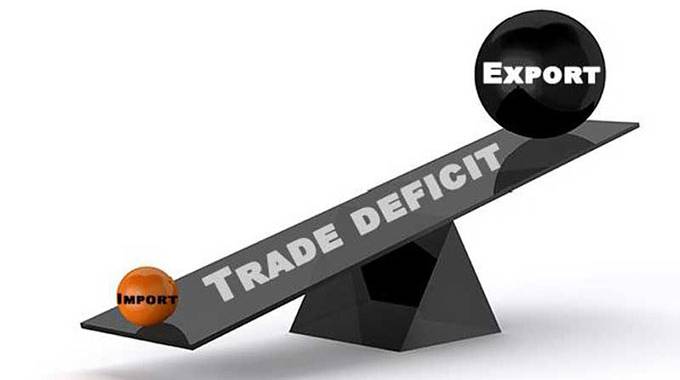Trade deficit down 44pc

Tawanda Musarurwa Senior Business Reporter
Zimbabwe’s trade deficit went down 44 percent to $127 million in August 2018 from $229 million in February 2018 on the back of significant growth in exports during the seven-months period.
Official statistics from the Zimbabwe National Statistical Agency (ZimStats) show that between February and August 2018, the country’s total exports amounted to $2,4 billion, a 24 percent increase, from $1,9 billion recorded in the same period last year.
Zimbabwe’s total trade for the period February to August 2018 increased by 25 percent to $6,4 billion from $5,1 billion recorded in the same comparative period in 2017.
The exports fluctuated in the seven months to August totalling $346 million in February, $28 million in March, $329,6 million in April, $267 million in May, $384 million June, $340 million in July and $449 million in August.
Month-on-month exports increased by 32 percent from $340 million in July to $449 million in August while imports increased by 3 percent from $560 million in July to US$577 million in August.
Zimbabwe’s exports may have benefited from accelerating global growth with the attendant rising demand driving broad-based price increases for most commodities this year.
Figures from the Reserve Bank of Zimbabwe (RBZ) show that commodity prices strengthened in the first quarter of 2018, with prices for energy exports, base metals, precious metals and agricultural products surging between January and May 2018, largely due to strong demand, amid tightening global supplies.
The country’s trade deficit decreased by 42 percent from $220 million in July 2018 to $127 million in August.
According to ZimStats, during the period under review, Zimbabwe’s exports were largely made up of primary commodities such as semi-processed gold (34 percent), nickel mattes (14 percent), flue-cured tobacco (12 percent), nickel ores & concentrates (11 percent), ferro-chromium (7 percent), chromium ores & concentrates (3 percent), jewellery (2 percent), diamonds (2 percent) and platinum (1 percent).
On the other hand, imports were largely made up of diesel (15 percent), unleaded petrol (8 percent), electrical energy (3 percent), crude soya bean oil (2 percent), rice (2 percent), medicaments (2 percent), wheat (1 percent), motor vehicles (1 percent), and ammonium nitrate (1 percent).
As data shows, the economy relies mainly on exports of unprocessed and semi-processed commodities.
South Africa remains the largest market for Zimbabwean products, taking 46 percent of total exports, followed by United Arab Emirates with a (22 percent) market share, Mozambique (10 percent), Zambia (2 percent) and China (1 percent) among others.
On the other hand, major source markets during the same period were South Africa (42 percent), Singapore (22 percent), China (5 percent), Japan (3 percent), Mauritius (3percent), India (3 percent) United Kingdom (2 percent) and Mozambique (2 percent), among others.








Comments